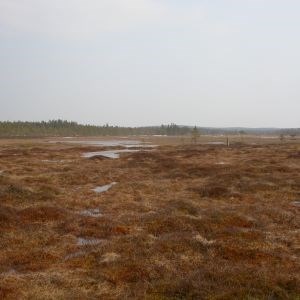Northern mires have accumulated carbon from the atmosphere for thousands of years and store today about one third of the world’s soil organic carbon. The carbon is stored in the form of meters of permanently waterlogged peat. The water that fills this peat is usually rich in carbon dioxide (CO2), produced by a slow breakdown of the organic material. If released to the atmosphere, this CO2 can contribute to further global warming.
The CO2 stored in the peat porewater has generally been considered stable with slow transport to the surface by a constant diffusion. Hence, hardly contributing to the annual dynamics in atmospheric CO2 emissions from northern mires. This view of a stable CO2 storage is, however, based on limited empirical data collected with low resolution in time.
A new study by Campeau et al., published in the journal Nature Communications, presents a four-year continuous record of hourly CO2 concentration measurements in peat porewater. This unique dataset shows that after months of stability over the summer, the CO2 concentrations in the porewater fall abruptly in the space of a few days to weeks every autumn, and then recovers slowly over the course of winter.
Cooling air temperatures in autumn even out the porewater temperatures along the peat depth each autumn. The disappearance of a temperature gradient with depth in the peat allows turbulence to propagate deep into the peat. This turbulence increases the speed of CO2 transport to the surface by several orders of magnitude, causing a recurrent rapid loss of porewater CO2 stored deeper in the peat.
The annual loss of porewater CO2 store in autumn is similar in magnitude to the mire’s annual carbon sink. This hitherto unknown phenomenon highlights a potentially important climate-sensitive mechanism in the peatland carbon cycle.
The study is a collaboration with researchers from SLU and Umeå University.
Read more
Campeau, A., Vachon, D., Bishop, K., Nilsson, M. B., Wallin, M. B., 2021, Autumn destabilization of deep porewater CO2 storage in a northern peatland driven by turbulent diffusion, Nature Communications, 12, 6857, doi:10.1038/s41467-021-27059-0
